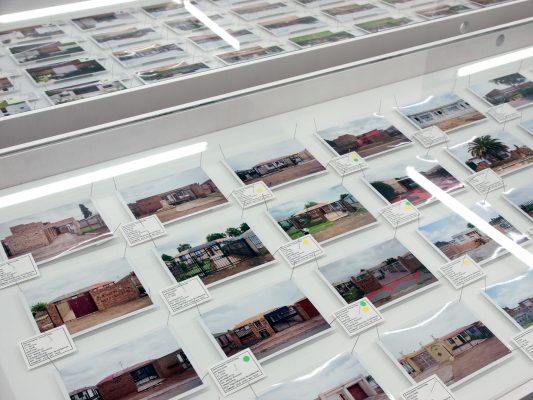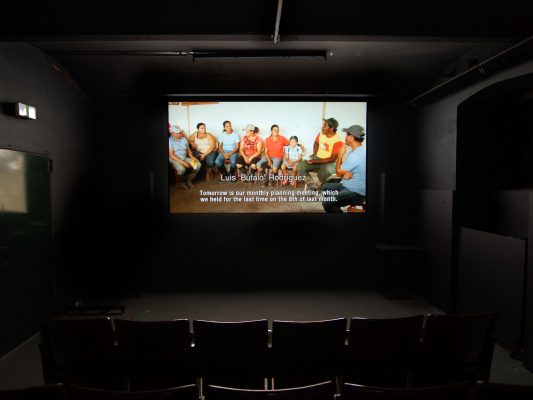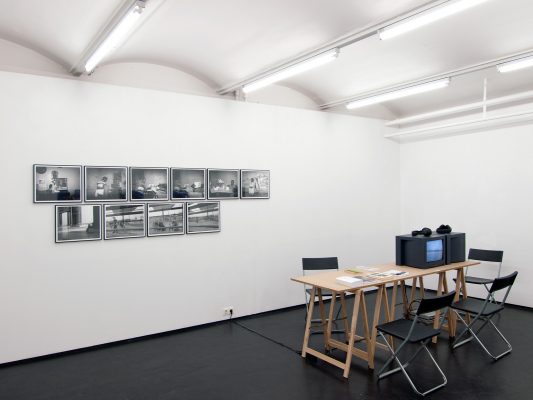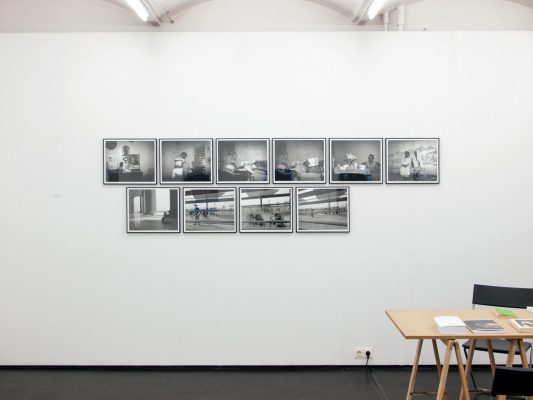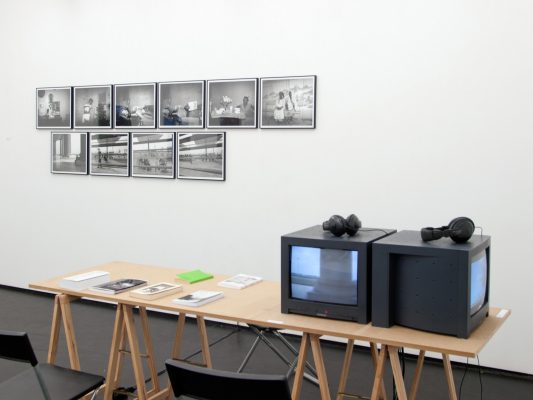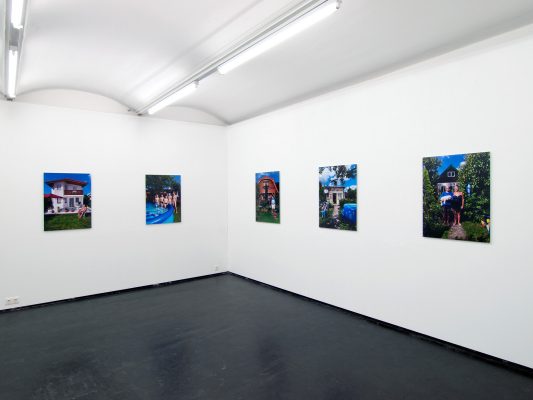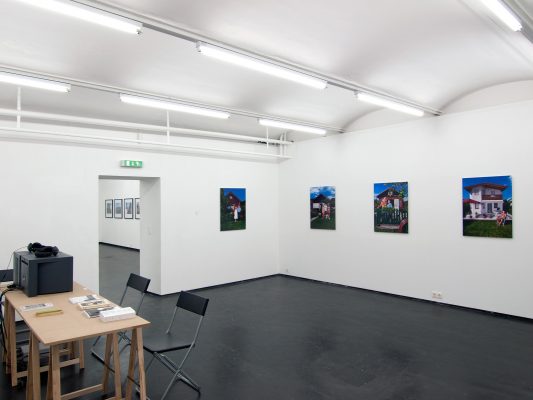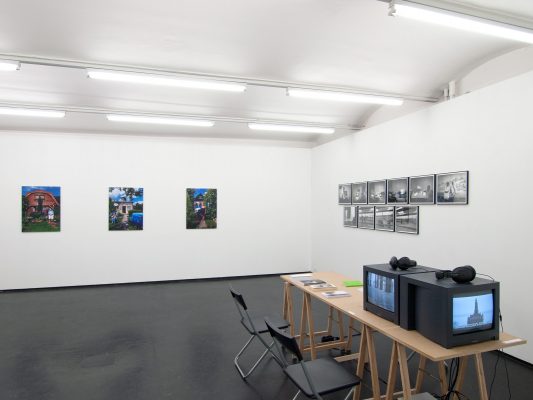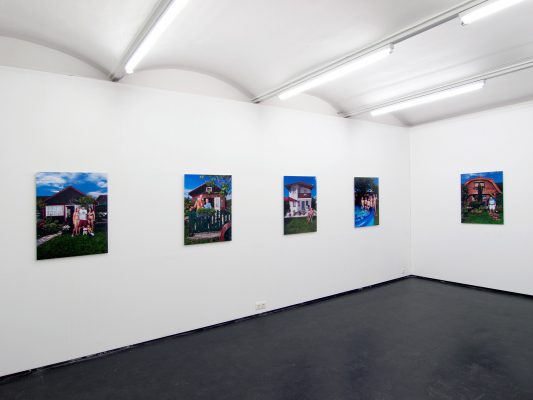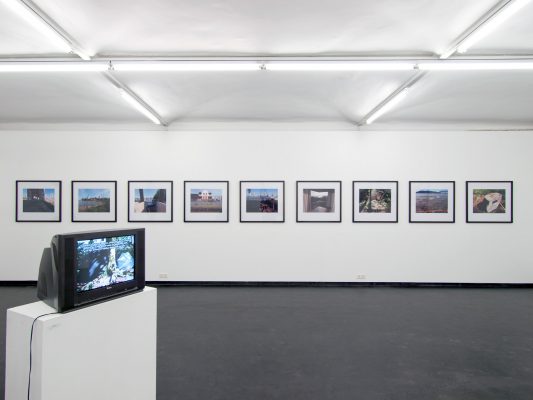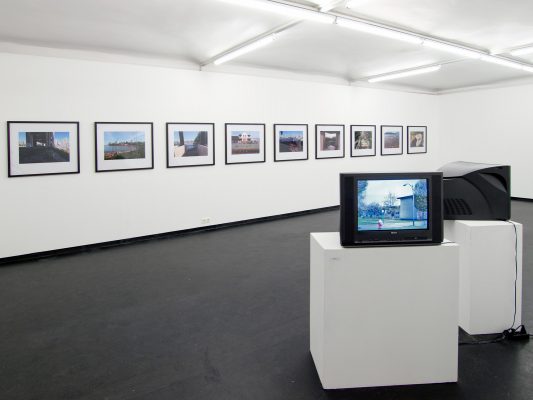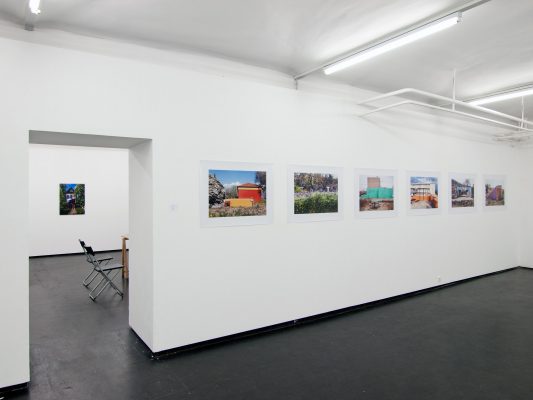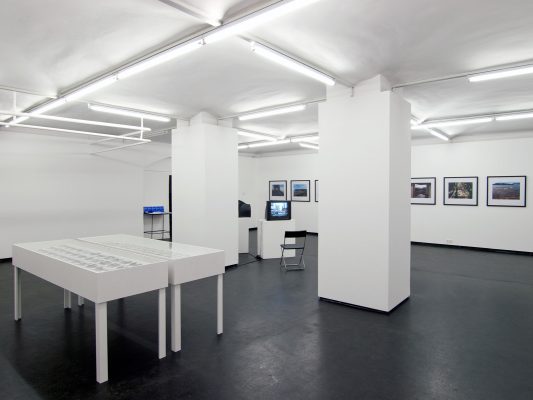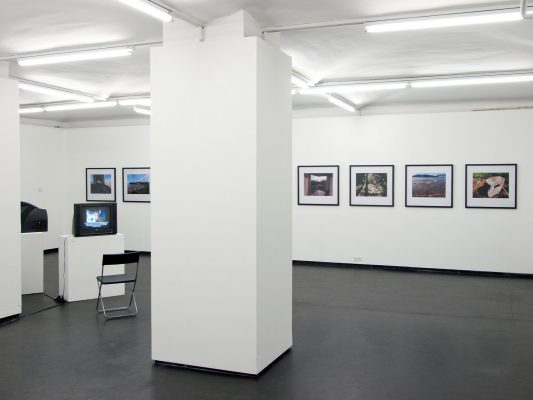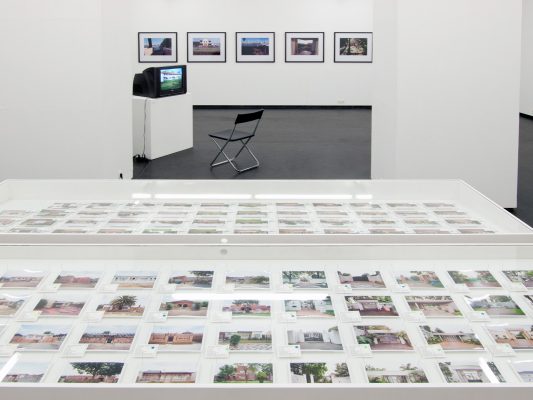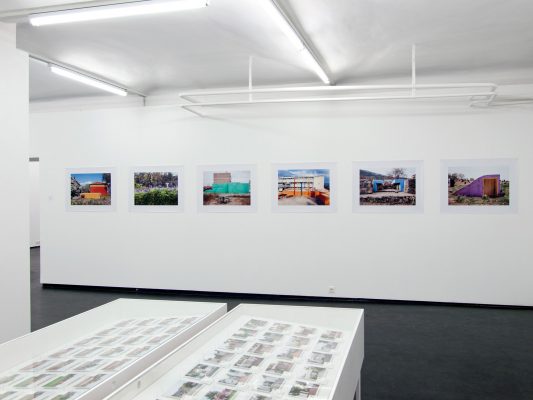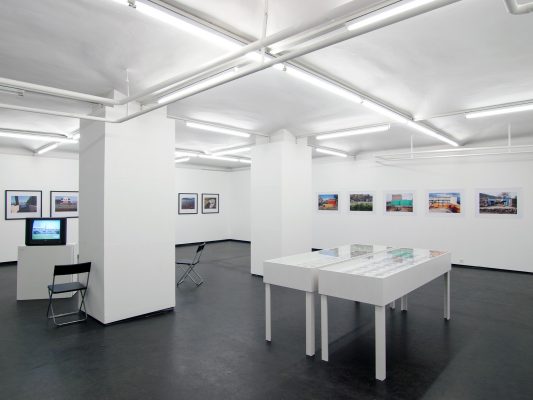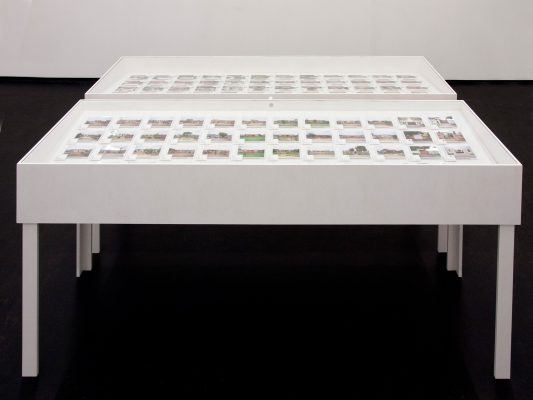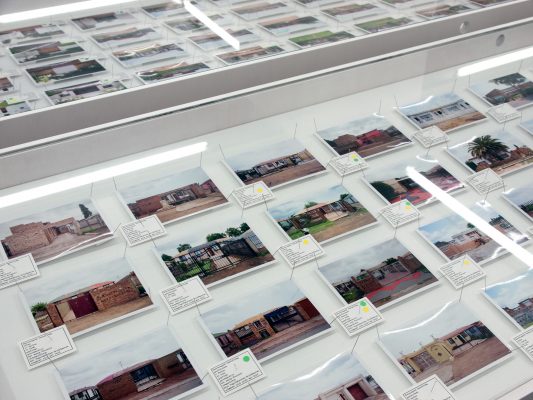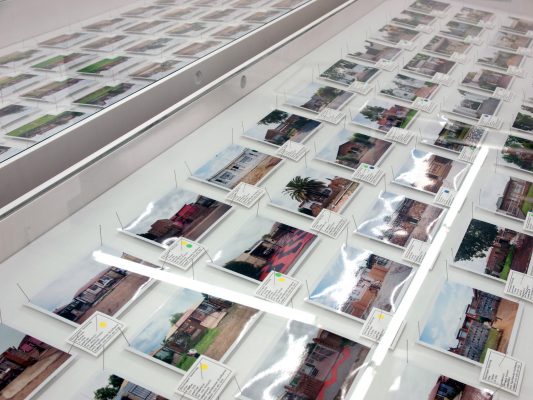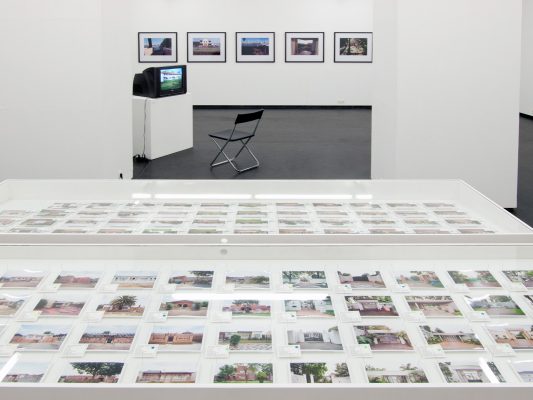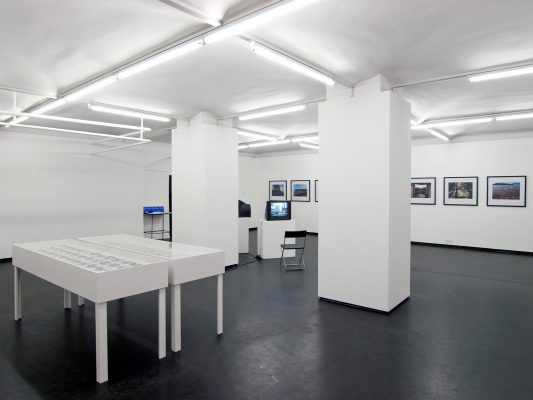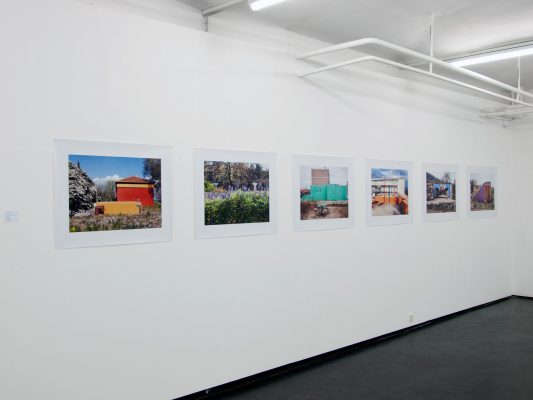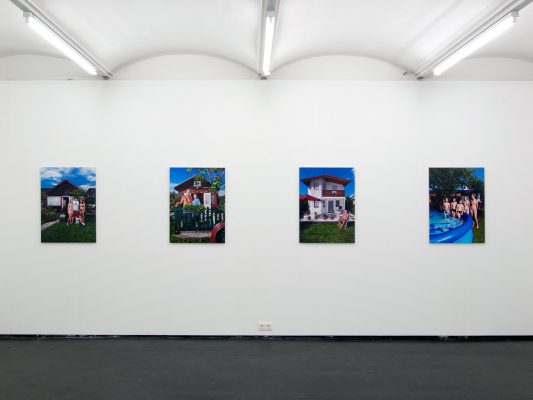Opening: Monday, 13 December, 7:00 p.m.
Closed for winter holidays: 22.12.2010 – 6.1.2011
Accompanying program Oliver Ressler: Friday, 14 January 2011, 7:00 p.m.
Finissage and catalogue presentation: Monday, 31 January 2011, 7:00 p.m.
Patronanz: Alsergrund Kultur – Bezirksvertretung
“What constitutes identity today?” is one of the questions posed by the curatorial team at Fotogalerie Wien in the context of the annual Theme of Focus for 2010. The three-part exhibition series focuses on the issues of identity at present, in its multi-faceted and processual form. It also includes presenting artistic positions that mirror the inconclusive and, more particularly, the ambiguous aspects of identity of today’s late modernist subject: The artists visualize how the interwoven formation of personal and collective identities paradoxically oscillate between internal and external determinations of self.
For the final show in this series, IDENTITY III – POSITIONING, the curatorial collective at Fotogalerie Wien has invited artists who deal critically with the positioning of the subject in late modernism. While in early modernism, collective identities provided a secure framework, one in which individual identities also had their place, formerly stabilizing factors (such as class, nation, ethnicity, culture, religion or gender) are subject to tendencies that dissolve such categories in late modernism. From the current yearning for positioning, a desire to experience a sense of belonging and social recognition can be sensed, since the late modernist (post)colonialist world, as a result of globalization, is influenced by a world view without boundaries, in which the mediatization furthermore has a normative effect on identity. Such social processes of individualization as well as pluralization lead to the destabilization and fragmentation of identities. More than ever, the relevance of power structures thereby comes to the fore, in which the issue of social belonging drastically reveals itself as a struggle for inclusion and exclusion.
Gianmaria Gava’s series Little Austria shows couples and families posing in the glistening sun in their Viennese allotment gardens (Schrebergärten). During the post-war years, parceled plots of land developed from informal potato fields into allotment gardens. Since then, weekend homes – often taking on a dollhouse-like form – have superseded garden sheds: The architectural style of each home reveals the individual tastes of the home builder. The home builders’ creative will is connected to the human aspiration to own land, considering the fact that the notion of homeland has long been associated with property ownership.
In Orit Ishay’s series Public Domain, the artist sets her sights on bomb shelters found all across Israel. The various constructions, portions of the bunkers visible above the ground, banalize in their initially harmless colorful appearance an anxiety that is ubiquitous in Israel. Underneath these tiny buildings, a hollow foundation full of bunkers is concealed whose real size – and dark meaning – remains hidden below the earth’s surface. The bright colors refer to a form of social interaction, yet they also reveal the alarming effect of adaptation.
Julia Müller-Maenher’s series Soweto (1+2) and Houghton Estate were developed in South Africa, in a country that, given the current security situation – whether in Johannesburg’s townships or in the wealthy suburbs of the north – even the smallest private plots are protected by fences and walls. Müller-Maenher is not interested in representing the contrast between the rich and the poor. Rather she approaches the topic with an archival method. Especially the additions to buildings and the colorful paintwork in Soweto point to an aspiration to individualize.
In their film Comuna im Aufbau (Comuna Under Construction), Oliver Ressler and Dario Azzellini examine forms of self-organization in Venezuela in two slum areas in Caracas and in a so-called “communal city in planning” on the countryside – a participatory process, at the end of which a new socialism could be the result. The current 30,000 communal councils (Consejos Comunales) make it possible for participants to personally and actively make decisions about their future and about details of local infrastructure in their environment. The film illustrates how, despite numerous hindrances, a direct democracy can lead to a clear improvement in living conditions.
Tim Sharp’s series FIRST CONTRACT reflects on how land ownership rights of indigenous peoples in North America were and are systematically being taken away. With the linear and triangular positioning of property marking tape, Sharp invokes associations of Euclidean geometry used to measure land taken into possession by colonizers. Sharp’s two-channel video Little Mountain addresses how land continues to be treated as a commodity or speculative venture.
Christian Wachter shows parts of his extended work complex Impressions D’AFRIQUE, including the video L’INTANNABLE – Le Docteur CONOMBO et (d’après) ses ÉCRITS (2004), which portrays the former prime minister of Burkina Faso through his writings. The video surplus (krebsgang) orbits around the basilica Notre-Dame de la Paix, the African replica of St. Peter’s Basilica in Yamoussoukro (Côte d’Ivoire). With the sounds of marching exponentiating the (sideward) movement, the artist literally adds a dynamic to the paradoxical domain of advances and retreats in decolonization processes. The series of black and white photographs Koda eventually goes directly against any and all attempts of positioning.
By Claudia Marion Stemberger
